By 2038, these economies are tipped to rule the world
The powerhouse economies of the future, revealed

Lintao Zhang/Getty Images
The 2024 edition of the World Economic League Table (WELT) anticipates a major shake-up of global economies by 2038. A number of emerging markets are tipped to race up the rankings, while several higher-income economies will fall back – including the former number one.
Billed as "the go-to measure for the comparative economic success of different countries", the annual report has been compiled by the UK's Centre for Economics and Business Research (Cebr) for the past 15 years.
Read on to discover the 30 nations that Cebr predicts will reign supreme in 2038, with all dollar amounts in US dollars.
30. Ireland, 2038 GDP: $1.173 trillion (£925bn)

Madrugada Verde/Shutterstock
Ireland boasts one of Europe's most dynamic economies. Growth is expected to pick up from last year's 2% to average out at 2.9% every year between now and 2028, before dropping slightly to an average of 2.7% over the following decade.
With the ideal growth rate for an advanced economy considered to be between 2% and 3%, the forecast bodes well for the Emerald Isle.
Ireland will become a trillion-dollar economy by 2038, while its population – currently just over five million – is projected to grow by at least one million by the end of the 2030s. That said, the country is predicted to drop from 26th place to 30th in the WELT rankings by 2038, with a number of faster-growing emerging economies expected to overtake it.
29. Egypt, 2038 GDP: $1.198 trillion (£945bn)
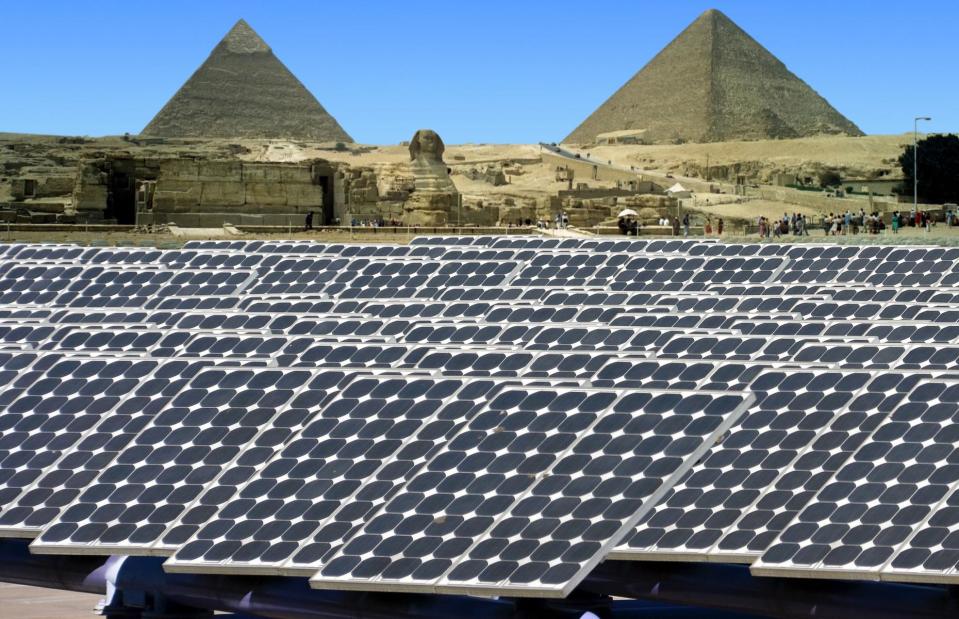
egd/Shutterstock
The Egyptian economy has plenty of headwinds to contend with, including stubbornly high inflation and unemployment rates and considerable public sector debt. To make matters worse, a currency devaluation and interest rate hikes are both probable this year.
But it's not all bad. Cebr is positive about Egypt's future growth, with the country expected to become a green energy trailblazer. The annual rate of growth is predicted to average 4.9% until 2028, balancing out at 5% over the subsequent decade.
As a result, Egypt is set to climb an impressive 16 places in the rankings over the next 14 years, meaning it will be the world's 29th largest economy by 2038.
28. Israel, 2038 GDP: $1.229 trillion (£970bn)

Leon Neal/Getty Images
Israel's war with Hamas is having a marked effect on its economy, with the country's Ministry of Finance now expecting growth of 2% next year, down from its pre-conflict estimate of 2.7%.
The WELT has highlighted both the direct and indirect economic repercussions of the hostilities, from destruction of infrastructure to the weakening of investor sentiment.
Be that as it may, Cebr still predicts Israel's growth will average 3.4% annually until 2028 before increasing to 3.7% over the following decade. The country is tipped to move up the rankings by one position by 2038, by which time Cebr anticipates its gross domestic product (GDP) will have surpassed one trillion dollars.
27. Thailand, 2038 GDP: $1.313 trillion (£1.035tn)

JACK TAYLOR/AFP via Getty Images
Proving resilient, the Thai economy is showing signs of growth thanks to rebounding tourism and revitalised exports.
Cebr predicts the nation will enjoy an average annual growth of 3.1% between 2024 and 2028. Thailand's GDP is predicted to exceed a trillion dollars by 2033 and is expected to have risen four spots up the rankings by 2038.
Like many countries, however, Thailand will still have to grapple with an ageing population, comparatively low productivity, and high income inequality.
26. UAE, 2038 GDP: $1.351 trillion (£1.066tn)

Paula Bronstein/Getty Images
In late 2022, the UAE embarked on a plan to double its GDP by 2031, which saw it massively ramp up its non-oil exports and tourism.
While Cebr doesn't expect the nation to reach this ambitious target, it still anticipates its economy will grow by an annual average of 4.2% between now and 2028. This will then further expand to 4.5% until 2038, by which point the country's GDP will have eclipsed the trillion-dollar mark.
It's perhaps no surprise that the UAE is forecast to ascend the WELT by two places by the end of the forecast period.
25. Taiwan, 2038 GDP: $1.497 trillion (£1.181tn)

SAM YEH/AFP via Getty Images
Taiwan's economy has much in its favour, including the nation's status as a leading semiconductor manufacturer, its low rates of inflation, and high competitiveness. Cebr expects its growth to average 2.8% over the next three years before falling back to 2% a year until 2038. Taiwan's GDP is forecast to surpass a trillion dollars by 2028.
It's not all good news, however. By 2038, Taiwan is expected to drop three spots down the rankings to 25th place, with a potential Chinese invasion posing a severe threat to the nation's economy. During their recent summit in San Francisco, China's President Xi reportedly warned America's President Biden that Beijing intends to reunify with Taiwan, preferably "peacefully, not by force" (to quote NBC News).
Tensions are likely to rise further when the country goes to the polls to elect a new president later this year; the favourite, Lai Ching-te, is a fierce advocate of Taiwan's independence and is loathed by the Chinese government.
24. Switzerland, 2038 GDP: $1.529 trillion (£1.206tn)

MOZCO Mateusz Szymanski/Shutterstock
Affluent Switzerland has many strings to its economic bow, with its high-end manufacturing and banking sectors particularly counting in its favour.
The Swiss economy, which is set to hit the trillion-dollar mark by 2028, will see an average annual growth of 1.6% over the next five years. But given "challenges faced amid global transformations, banking crises, and evolving corporate taxation dynamics", as Cebr puts it, the nation is forecast to slip down the rankings by four places over the same period.
The country may also have to contend with a severe shortage of workers, with the number of people retiring unlikely to be offset by new employees.
23. Philippines, 2038 GDP: $1.536 trillion (£1.212tn)

Obs70/Shutterstock
A global growth leader, the Philippines enjoyed stellar economic growth of 7.6% in 2022, its highest percentage since 1976. While lower, its estimated growth of 5.3% in 2023 is still impressive.
Bolstered by a solid labour market, the Filipino economy is set to expand by 6.2% a year on average until 2028, followed by 6.1% annually over the subsequent decade. It's projected to attain trillion-dollar status by 2033. Unsurprisingly, the Philippines will likely zoom up the WELT rankings, rising 10 places by 2038.
22. Poland, 2038 GDP: $1.554 trillion (£1.226tn)

Grand Warszawski/Shutterstock
Poland is also forecast to become a trillion-dollar economy by 2033.
Like many other nations, it's had to deal with excessive inflation, which has held its economy back somewhat in recent years. Yet with a number of Poland's indicators looking good, including its ever-improving competitiveness, Cebr anticipates growth that will sit above 3% between 2025 and 2031 before balancing out to an annual average of 2.5% until 2038.
Instead of dropping down the rankings like a number of other high-income countries, Poland is expected to rise one spot by 2038.
21. Vietnam, 2038 GDP: $1.559 trillion (£1.23tn)

Associated Press/Alamy
Vietnam's economy is in fine form. Inflation is relatively low, as is unemployment, while its public debt is manageable. The country also benefits from reshoring, with many Western companies choosing to move manufacturing from China to the more "friendly" Vietnam.
These positives are all reflected in Cebr's forecast, with a yearly average growth of 6.7% anticipated between 2024 and 2028, followed by 6.4% annually during the subsequent decade. GDP is expected to exceed a trillion dollars by 2033, with Cebr noting that the Vietnamese government's goal of becoming a high-income economy by 2045 is a plausible one – though there's always the risk the country could fall into the middle-income trap.
20. Bangladesh, 2038 GDP: $1.720 trillion (£1.357tn)
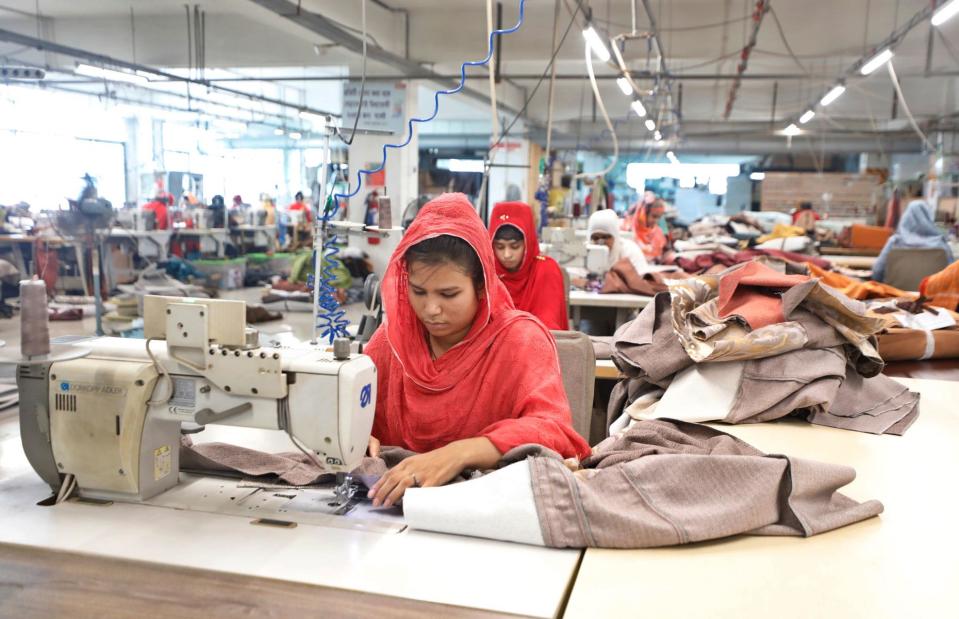
Sk Hasan Ali/Shutterstock
The highest climber in the top 30, Bangladesh is expected to soar 14 spots up the rankings by 2038. If you were wondering, the highest WELT climber is Guyana, which is forecast to ascend a staggering 51 places during the forecast period thanks to a recent oil find in the country.
Bangladesh's economy is projected to record annual growth that will comfortably exceed 6% between now and 2038. It's expected to become a trillion-dollar economy by 2033, although the nation's planning ministry has suggested this figure could be reached by 2030 if growth exceeds 8%. Bangladesh's textile and garment manufacturing industries will be the chief growth drivers, although the country is also diversifying into the lucrative realms of pharmaceuticals and electronics.
19. Netherlands, 2038 GDP: $1.876 trillion (£1.48tn)

Ralph Rozema/Shutterstock
The Netherlands reached the trillion-dollar milestone back in 2022. The country's economy is expected to grow by 1.2% in 2024 and then expand by an annual average of 1.6% until 2038.
The Dutch government is working towards achieving a sustainable, fully circular economy by 2050, which is likely to spur growth. However, the Netherlands is still forecast to drop two spots down the rankings by 2038.
18. Saudi Arabia, 2038 GDP: $2.215 trillion (£1.747tn)

H1N1/Shutterstock
Saudi Arabia also became a trillion-dollar economy in 2022. The country is doubling down on efforts to diversify its economy and wean itself off oil, with its business environment and competitiveness improving markedly.
Cebr expects its economy will grow by a yearly average of 3.5% between 2024 and 2028, with its annual growth forecast at an average of 2.9% over the following decade. In terms of its WELT ranking, the country is predicted to remain in 18th position.
17. Türkiye, 2038 GDP: $2.219 trillion (£1.751tn)

John Wreford/Shutterstock
Despite battling painfully high inflation and elevated unemployment levels, Cebr reports that Türkiye is now a trillion-dollar economy.
Last year's growth is expected to come in at 3.5%. That figure is projected to fall to an average of 2.8% annually through to 2028, before increasing slightly to 2.9% over the following decade.
While optimistic past predictions from Standard Chartered and PwC placed the country's economy in the 12th and fifth positions respectively by 2030, Cebr expects Türkiye to rise just one position in the WELT by 2028. It will gain another place by 2038, leaving it at #17 in the rankings.
16. Spain, 2038 GDP: $2.549 trillion (£2.01tn)
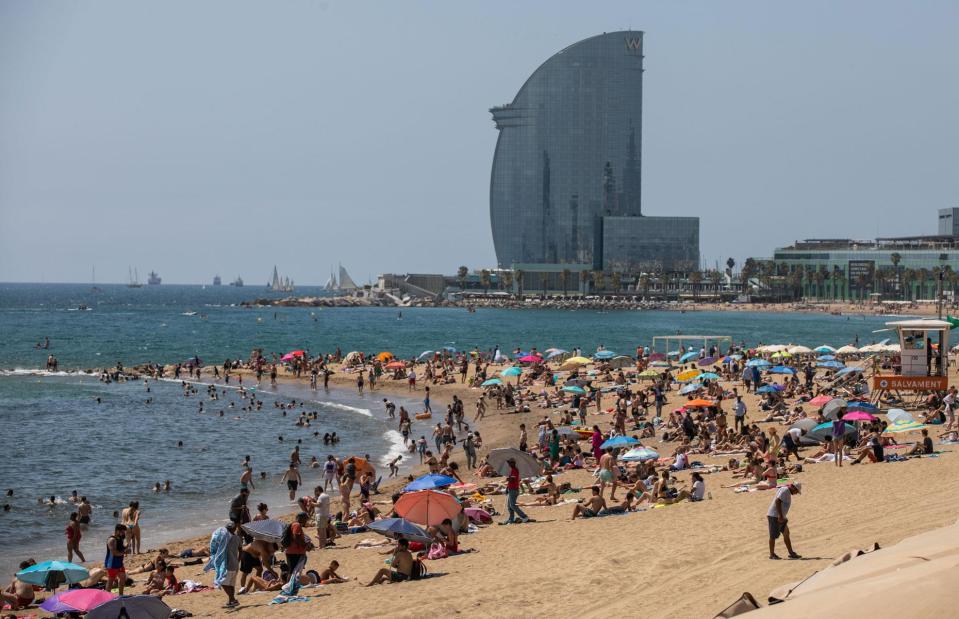
Zowy Voeten/Getty Images
Surpassing all expectations, the Spanish economy has already returned to its pre-pandemic levels, which it wasn't expected to achieve until the end of this year.
Going forward the country faces more than its fair share of challenges, from persistently high unemployment rates to its levels of public debt. In light of these, growth is forecast to slow from 2.1% in 2023 to an annual average of 1.6% until 2028, before dropping to 1.5% over the subsequent decade. As such, Spain is predicted to drop a spot down the WELT rankings by 2038.
With the Spanish economy surpassing the trillion-dollar mark back in 2004 and holding a wow-worthy #10 spot on the 2008 edition of WELT, it's going to be quite the comedown.
15. Mexico, 2038 GDP: $2.783 trillion (£2.196tn)

ALFREDO ESTRELLA/AFP via Getty Images
In 2022, Mexico overtook its former colonial leader Spain to become the world's leading Spanish-speaking economy. Mexico has experienced a strong post-pandemic recovery and is reaping the rewards of the United States-Mexico-Canada Agreement and nearshoring of US manufacturing from China.
Growth in Mexico is expected to slow to 1.2% in 2024 in tandem with softer growth in the US, average 2% annually until 2028, and then drop slightly to 1.9%-per-year until 2038. The country is tipped to drop four spots down the rankings between now and 2038, yet will stay ahead of Spain to remain the top Hispanic-speaking nation according to Cebr.
14. Russia, 2038 GDP: $3.142 trillion (£2.479tn)

KIRILL KUDRYAVTSEV/AFP via Getty Images
Russia's economy appears to be doing reasonably well, with growth expected to come in at 1.6% for 2023. However, this is largely attributed to the enormous military and government spending precipitated by President Putin's illegal invasion of Ukraine. Unemployment is at a record low, with many working-age males fighting in the conflict, and there's also been a significant talent exodus, with legions of professionals leaving the country.
Due to the war, the Russian economy is at risk of overheating with inflation and high interest rates. The future looks far from bright as international sanctions take their toll, while the US aims to slash Russia's oil and natural gas revenue in half by 2030.
Consequently, Cebr predicts Russia will drop down the WELT rankings from 12th place in 2024 to 14th by 2038.
13. Australia, 2038 GDP: $3.153 trillion (£2.487tn)
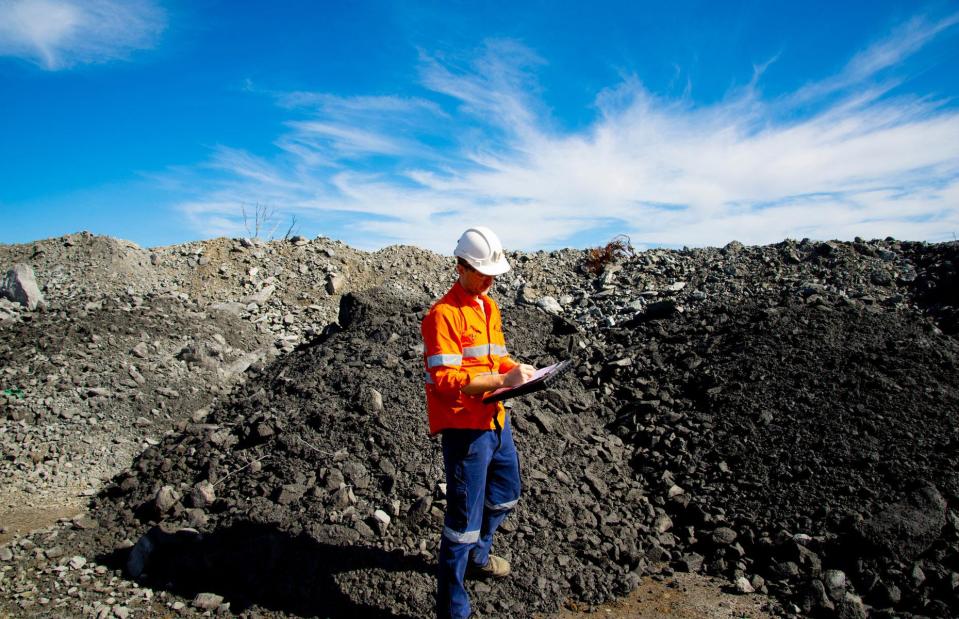
Adwo/Shutterstock
While Australia's post-pandemic recovery has been impressive, growth is expected to have slowed in 2023 due to high inflation. That said, the jobs market remains exceptionally tight.
Looking ahead, flagging demand for the nation's fossil fuel exports as the world becomes increasingly carbon-neutral could prove a major stumbling block, as would any slowdown in China or any other of Down Under's key trading partners.
Nevertheless, Cebr still anticipates average annual growth of 1.9% until 2028, then a healthier 2.2% annually through to 2038. This will result in a slight improvement in the country's WELT score, bumping it from 14th to 13th place.
12. Italy, 2038 GDP: $3.236 trillion (£2.553tn)

Stefano Mazzola/Getty Images
Italy is plagued by high rates of youth unemployment and excessive government debt, both of which have an impact on its growth.
Unsurprisingly, Cebr is rather pessimistic about the nation's economic prospects. It projects average yearly growth of 0.9% over the next five years, which will fall to 0.6% between 2029 and 2038.
Currently sitting in 9th place in the 2024 WELT rankings, Cebr anticipates that Italy will slip three positions by 2038.
11. Indonesia, 2038 GDP: $3.669 trillion (£2.895tn)

Ulet Ifansasti/Getty Images
Cebr is certainly more optimistic about Indonesia's growth prospects, despite envisaging a slight slowdown for the nation during the latter part of the forecast period.
Buoyed by increasing competitiveness and productivity – not to mention healthy public finances and a potential upswing in commodity exports – annual growth is predicted to average out at 4.5% until 2029 before falling to 4.3% for the remainder of the forecast period.
Despite this, Indonesia is expected to rise five spots up the WELT rankings by 2038. The International Monetary Fund (IMF) is even more positive, suggesting that Indonesia's economy could be the world's sixth-largest as soon as 2027.
10. Canada, 2038 GDP: $3.679 trillion (£2.902tn)

Tetra Images/Alamy
Much like its neighbour to the south, Canada appears to be taming inflation while avoiding recession – although the country still has plenty of other long-term challenges.
Among them are falling productivity, decreasing competitiveness, and high levels of government debt, while a June 2023 report from the International Institute for Sustainable Development (IISD) found the country's oil and gas sector is poorly prepared for the global green transition and subsequent decline in demand for fossil fuels.
As such, Cebr expects Canada's growth to average a lacklustre 1.7% annually until 2029 before increasing to 1.9% through to 2038. The country is expected to retain its #10 position in the WELT rankings.
9. South Korea, 2038 GDP: $3.682 trillion (£2.905tn)

ANTHONY WALLACE/AFP via Getty Images
Likewise, the South Korean economy faces a challenging future, with the nation's declining birth rate and ageing population threatening to inhibit growth. Cebr still sees vast potential for the country to offset this by increasing its productivity rate, which is currently less than impressive.
With that in mind, Cebr predicts annual growth of around 2% until 2038, heralding the country's return to the top 10 for the first time since 2018. According to McKinsey, South Korea could become the world's seventh-largest economy by 2040 if the government adopts a more forward-facing overall strategy.
8. Brazil, 2038 GDP: $4.131 trillion (£3.259tn)

Alf Ribeiro/Shutterstock
Brazil's economy is proving to be unexpectedly resilient, with increasing exports, decreasing unemployment, and strong wage growth all driving up its GDP.
Growth is expected to sit at 2.9% for 2023 before falling to an annual average of 1.9% until 2029, when it's predicted to sit at 2% until 2038. While not overly impressive, the country's growth rate will still see it retain its current 8th-place position in the WELT.
It's worth noting that Brazil boasted the world's sixth-largest economy in 2012 before the economic crisis of the 2010s prompted it to drop down the rankings.
7. France, 2038 GDP: $4.813 trillion (£3.811tn)
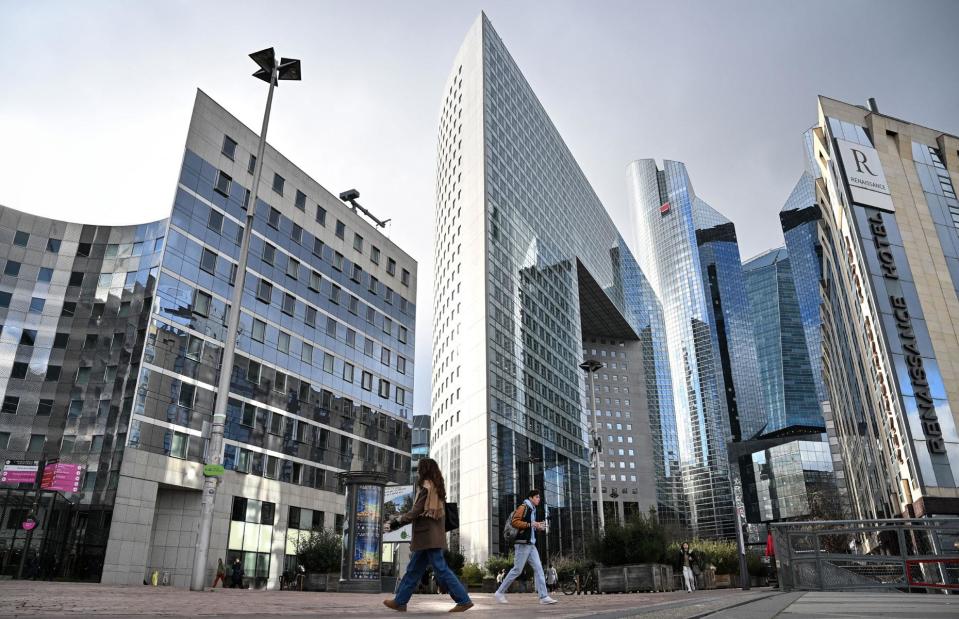
MIGUEL MEDINA/AFP via Getty Images
The French economy was the fifth-largest globally as recently as 2013, yet has since fallen to seventh place.
It's expected to remain there through to 2038 rather than falling any further, with factors such as an ever-improving environment for foreign investment and the country's green transition (France is aiming to become Europe's first major decarbonised economy) proving crucial.
After a sluggish 2023, annual growth is forecast to accelerate to 1.4% on average until 2028 before increasing to 1.5% for the rest of the forecast period. This marks a downgrade from the 2023 edition of WELT, which pegged its growth between 2028 and 2038 at 1.7%.
6. UK, 2038 GDP: $5.771 trillion (£4.552tn)

Jeff Gilbert/Alamy
The UK is also expected to be a non-mover, hanging on to its position as the world's sixth-biggest economy throughout the forecast period. While inflation is cooling, it still remains above the Bank of England's target. And though interest rates are set to start falling in early or mid-2024, they're likely to remain high for some time yet.
These, coupled with a number of other economic headwinds, will make for subdued growth of 0.5% in 2024. As monetary policy loosens, however, a significant upswing to 1.9% is expected in 2025, with annual growth between 1.6% and 1.8% predicted through to 2038.
5. Germany, 2038 GDP: $7.434 trillion (£5.864tn)

Omer Messinger/Getty Images
Europe's manufacturing juggernaut, Germany was hit hard by the surge in energy prices in 2022. The situation was made even worse by its over-reliance on Russian natural gas, for which it's had to rapidly find alternatives.
While the German economy is estimated to have contracted by 0.4% in 2023, growth is tipped to return this year, albeit at 0.7%. This figure is projected to rise to 1.6% in 2025 before settling down to average 1.3% a year until 2038.
Having overtaken Japan as the world's third-largest economy in 2023, Germany is now predicted to fall back to fourth position by 2026 before dropping to fifth in 2027 and staying there for the rest of the forecast period.
4. Japan, 2038 GDP: $8.894 trillion (£5.865tn)

Tada Images/Shutterstock
Facing stagnant growth since the 1990s, Japan just can't seem to drag itself out of the mire. The country is expected to regain its position as the world's third-largest economy by 2028. However, this is anticipated to be a result of the EU's relatively poor growth more than anything else, and Japan will have fallen back to fourth place once again by 2033.
Cebr foresees low growth for Japan throughout the forecast period, mainly due to the nation's rapidly ageing population and reluctance to embrace the mass migration required to offset it. Indeed, it could face a shortage of as many as 11 million workers by 2040, according to a study by think tank Recruit Works Institute.
3. India, 2038 GDP: $12.881 trillion (£10.162tn)
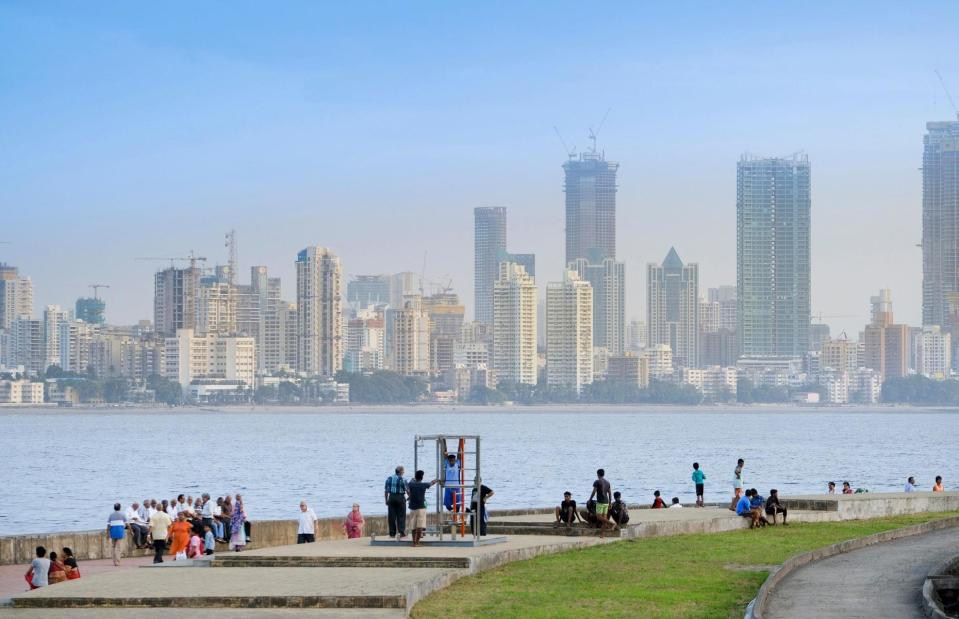
John Michaels/Alamy
India's economy has many factors in its favour, including a young and well-educated population, a thriving entrepreneurial sector, and ballooning manufacturing output.
Its growth for 2023/24 is forecast at a robust 6.4% and is expected to stay around that figure for the remainder of the forecast period, propelling the country two spots up the WELT rankings by 2038.
Looking even further ahead, Cebr expects India to become the world's number-one economy at some point in the 2080s, based on demographic estimates and projections.
2. USA, 2038 GDP: $47.827 trillion (£37.732tn)

Lucky-photographer/Shutterstock
The world's largest economy since it surpassed China in the 1890s, the United States is predicted to be knocked off the top spot in 2037 – nine years later than Cebr initially predicted back in 2020.
With inflation calming down and other indicators looking positive, the US appears to be achieving a soft landing. Growth is expected to have reached a respectable 2.2% in 2023, though that figure may fractionally drop this year.
America's growth rate during the rest of the forecast period won't, of course, prevent China's economy from overtaking. However, China's long-awaited return to the top is likely to be short-lived; Cebr predicts the US will regain its number one position during the 2050s before losing out to India in the 2080s.
1. China, 2038 GDP: $48.811 trillion (£38.508tn)

Lynxs Photography/Shutterstock
China's post-pandemic recovery has been patchy, and its 2023 growth is projected to come in at 5.1%, well below the phenomenal figures the country was seeing in the 2000s. Growth is predicted to moderate further over the forecast period but will be healthy enough to push the country to the top of the WELT rankings by 2038.
However, the economy of the People's Republic has two fundamental problems: a faltering property sector and an ageing population. As we've mentioned, China's stint as the world's number-one economy could be relatively fleeting and, in any case, the forecast is contingent on the country not invading Taiwan. If it does, the country may never overtake the US...
Now discover which countries are home to the highest cost of living

 Yahoo Finance
Yahoo Finance 